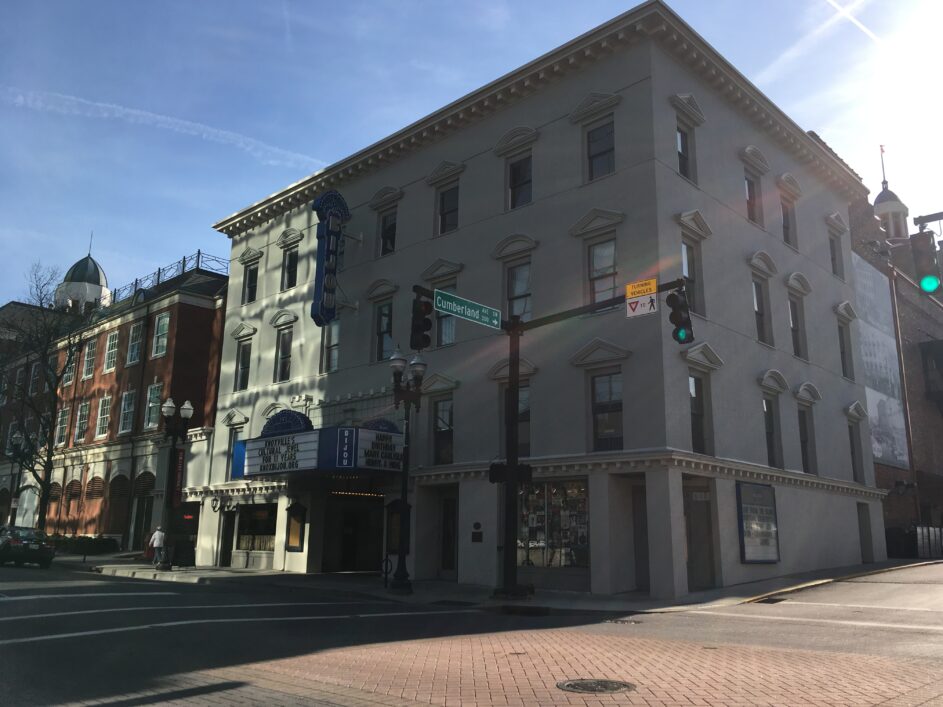While the world celebrated International Women’s Day on Monday, Knoxville history fans also recognized the date as an anniversary of local significance.

Opening night in 1909 (from the Bijou Theatre Facebook page)
It was on March 8, 1909, that the Bijou Theatre, 803 S. Gay St., opened its doors for its first performance. There was a sell-out crowd for George M. Cohan’s “Little Johnny Jones.” Everyone who was anyone was there.
Now striving to navigate the choppy waters of Covid-19 restrictions, the Bijou is celebrating March with limited-seating events that are also being streamed online as “Live From the Bijou” offerings. Kelsey’s Woods opened the series March 5, and three shows remain: Temp Job on March 12, CrawDaddy Jones on March 19 and Three Star Revival on March 27.
The Bijou’s entire history has been tumultuous, with more ups and downs than a Chilhowee Park roller coaster. The theater was added as part of the Lamar House, a hotel complex built in 1817 that had gone through its own highs and lows.
Construction, at a final price tag of $50,000, started in 1908 on the site where the hotel’s ballroom had formerly sat. When it opened, the Bijou had a 1,500-person capacity. African-Americans were allowed only on the gallery level and had a separate entrance on Cumberland Avenue, but it was the only theater in town that admitted blacks and whites at the time.

A full house early in the Bijou’s history (Calvin M. McClung Collection)
The early years featured traditional theater and vaudeville. Visiting performers included the Marx Brothers, John Philip Sousa, and Anna Pavlova and the Ballet Russe. By 1935, the Bijou had become primarily a second-run movie theater with occasional live shows. Theatre greats such as Dorothy Gish, Alfred Lunt and Lynn Fontanne, and Ethel Barrymore graced the stage in downtown Knoxville. Founding conductor Bertha Walburn Clark helmed the fledgling Knoxville Symphony Orchestra’s performances at the Bijou from 1936 to 1941.
In the mid-1960s and early 1970s, the Bijou reached its nadir. It became a porno house – ahem, adult theater – known as the “Bijou Art Theatre.” The adjoining hotel, which had devolved into a space for prostitutes and a flophouse, was declared a public health hazard and shut down. In 1975, the Bijou’s owner was evicted for nonpayment of taxes, and the theater was destined for the wrecking ball.

Time to update the marquee!
But that was also the year that the building was placed on the National Register of Historic Places. Recognizing the theater’s significance and potential, a group of concerned citizens (the beginnings of Knox Heritage) worked to save it and raised the money to stop the demolition. The Bijou reopened in 1977 and thanks to a fundraising campaign in the mid-1980s was restored and once again became a favorite destination for live performances.

The iconic sign is seeing blue skies again.
Further restoration in the 1990s cost more than the amount pledged, and in May 2004 the theater had to be closed. Mayor Bill Haslam in 2005 announced a strategy (including federal funds) that would restore and preserve the Bijou for years to come.
The Bijou was going strong when the pandemic struck last year, and the management and board are determined to have it return to the limelight as soon as it’s safe to do so.
Betsy Pickle is a freelance writer and editor who particularly enjoys spotlighting downtown and South Knoxville.

